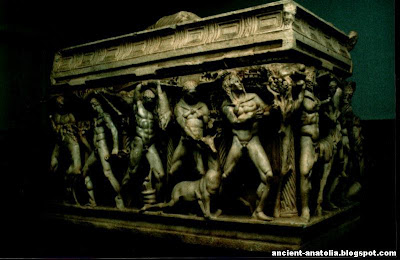

Heracles Tomb @ Konya Museum of Archaeology
Photo credit ancient-anatolia.blogspot.com
Sarcophagus discovered among the Tiberiopolis city remains on the Konya-Beyşehir highway in 1958. Dates back to 220-260 in the Roman Era. It is 2.50 x 1.30 m. in dimensions and 1.70 m in height. There are reliefs of 12 different works of Herakles on its four walls . It is at Konya Archeological Museum.